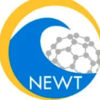![]() The Research Experience and Training Coordination Core (RETCC) is organized around the principle that the skills needed for productive careers in environmental science include the ability to think creatively in a cross-disciplinary context, communicate effectively with a range of audiences, and appreciate the role of communities and their concerns as both motivators and beneficiaries of environmental research. The RETCC supplements trainee research activities to promote growth in these areas by providing and facilitating
The Research Experience and Training Coordination Core (RETCC) is organized around the principle that the skills needed for productive careers in environmental science include the ability to think creatively in a cross-disciplinary context, communicate effectively with a range of audiences, and appreciate the role of communities and their concerns as both motivators and beneficiaries of environmental research. The RETCC supplements trainee research activities to promote growth in these areas by providing and facilitating
- cross-disciplinary lab exchanges (externships) and practicums
- opportunities to present and discuss works-in-progress with other trainees and faculty members
- community engagement and research translation opportunities
- data science training, including access to a course in reproducible science
- trainee participation in grantee and professional meetings and leadership and networking opportunities
- trainee access to professional development resources, including nomination for NIEHS SRP-sponsored honors
The next generation of researchers are learning important skills now. We have an opportunity to provide them with the tools and resources to ask the right questions and design their own future research programs to support public health.









